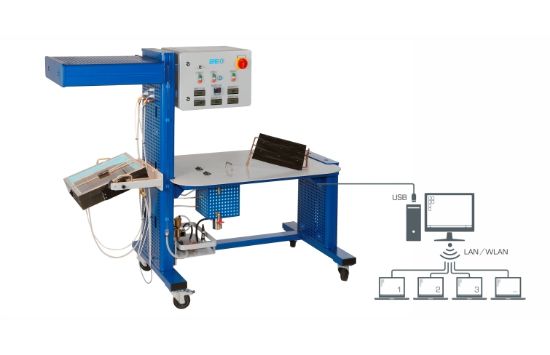The GUNT Solar Thermal Energy Trainer illustrates the conversion of solar radiation into usable thermal energy for domestic water heating. Equipped with a fully functional solar thermal system model and a lighting unit simulating natural solar radiation, it enables weather-independent laboratory experiments to analyze absorption, heat transport, and system efficiency.
Product Features
- Demonstrates solar thermal heating of domestic water with a functional model system
- Includes lighting unit to simulate natural solar radiation for indoor experiments
- Heat transfer via an absorber, pump, and integrated heat exchanger in a hot water storage tank
- Experiments with varying angles of incidence and illuminance levels
- Interchangeable absorbers: selective coating and simple blackened absorber for comparative studies
- Optional external heat consumers attachable to the storage tank
- Additional parabolic trough collector available for extended investigations
- Measurement of temperatures at storage tank, collector inlet/outlet, ambient air, and illuminance
- Data displayed on device and transferable via USB for software analysis
- Network-capable software enables experiment monitoring and analysis via LAN/WLAN at multiple workstations
Benefits
- Hands-on understanding of solar thermal energy conversion and efficiency factors
- Enables detailed analysis of collector performance and heat transfer processes
- Weather-independent experimentation through simulated solar radiation
- Facilitates data acquisition and remote monitoring via PC software
Why Choose the GUNT Solar Thermal Energy Trainer?
The GUNT Solar Thermal Energy Trainer is ideal for educational institutions and research labs focused on renewable energy. It offers comprehensive practical training on solar thermal system operation, efficiency optimization, and advanced data analysis for future energy engineers and technicians.

